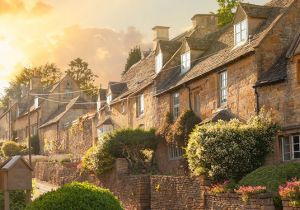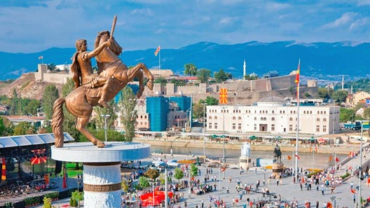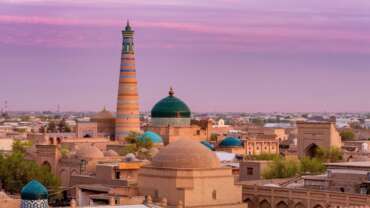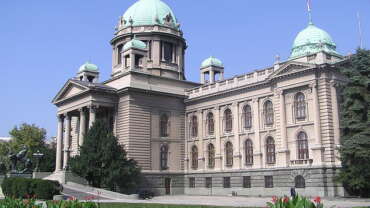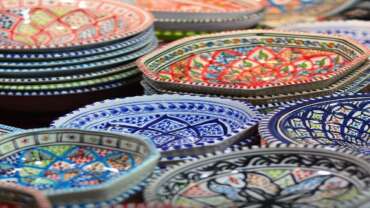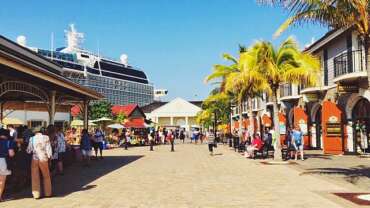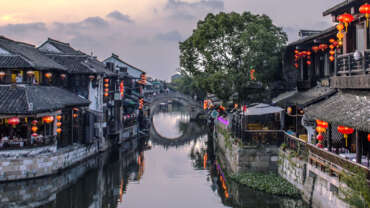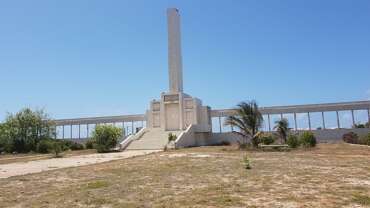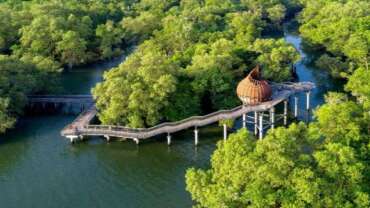United Kingdom - Home of amazing moments!
Great Britain is an island separated from the European mainland by the English Channel and North Sea. It comprises the nations of England, Scotland and Wales. Its long history is evident in prehistoric sites such as Neolithic Stonehenge and medieval castles like those at Warwick, Dover and Caernarfon. Roman ruins include Hadrian’s Wall, which once divided Roman Britain from the northern Scottish Lowlands.
History of United Kingdom
Ancient Britain
Archaeologists working in Norfolk in the early 21st century discovered stone tools that suggest the presence of humans in Britain from about 800,000 to 1 million years ago. These startling discoveries underlined the extent to which archaeological research is responsible for any knowledge of Britain before the Roman conquest (begun AD 43). Britain’s ancient history is thus lacking in detail, for archaeology can rarely identify personalities, motives, or exact dates or present more than a general overview. All that is available is a picture of successive cultures and some knowledge of economic development. But even in Roman times Britain lay on the periphery of the civilized world, and Roman historians, for the most part, provide for that period only a framework into which the results of archaeological research can be fitted. Britain truly emerged into the light of history only after the Saxon settlements in the 5th century AD.
Until late in the Mesolithic Period, Britain formed part of the continental landmass and was easily accessible to migrating hunters. The cutting of the land bridge, c. 6000–5000 BCE, had important effects: migration became more difficult and remained for long impossible to large numbers. Thus Britain developed insular characteristics, absorbing and adapting rather than fully participating in successive continental cultures. And within the island geography worked to a similar end; the fertile southeast was more receptive of influence from the adjacent continent than were the less-accessible hill areas of the west and north. Yet in certain periods the use of sea routes brought these too within the ambit of the continent.
From the end of the Ice Age (c. 11,000 BCE), there was a gradual amelioration of climate leading to the replacement of tundra by forest and of reindeer hunting by that of red deer and elk. Valuable insight on contemporary conditions was gained by the excavation of a lakeside settlement at Star Carr, North Yorkshire, which was occupied for about 20 successive winters by hunting people in the 8th millennium BCE.
Pre-Roman Britain
Neolithic Period
A major change occurred c. 4000 BCE with the introduction of agriculture by Neolithic immigrants from the coasts of western and possibly northwestern Europe. They were pastoralists as well as tillers of the soil. Tools were commonly of flint won by mining, but axes of volcanic rock were also traded by prospectors exploiting distant outcrops. The dead were buried in communal graves of two main kinds: in the west, tombs were built out of stone and concealed under mounds of rubble; in the stoneless eastern areas the dead were buried under long barrows (mounds of earth), which normally contained timber structures. Other evidence of religion comes from enclosures (e.g., Windmill Hill, Wiltshire), which are now believed to have been centres of ritual and of seasonal tribal feasting. From them developed, late in the 3rd millennium, more clearly ceremonial ditch-enclosed earthworks known as henge monuments. Some, like Durrington Walls, Wiltshire, are of great size and enclose subsidiary timber circles. British Neolithic culture thus developed its own individuality.
Bronze Age
Early in the 2nd millennium or perhaps even earlier, from c. 2300 BCE, changes were introduced by the Beaker folk from the Low Countries and the middle Rhine. These people buried their dead in individual graves, often with the drinking vessel that gives their culture its name. The earliest of them still used flint; later groups, however, brought a knowledge of metallurgy and were responsible for the exploitation of gold and copper deposits in Britain and Ireland. They may also have introduced an Indo-European language. Trade was dominated by the chieftains of Wessex, whose rich graves testify to their success. Commerce was far-flung, in one direction to Ireland and Cornwall and in the other to central Europe and the Baltic, whence amber was imported. Amber bead spacers from Wessex have been found in the shaft graves at Mycenae in Greece. It was, perhaps, this prosperity that enabled the Wessex chieftains to construct the remarkable monument of shaped sarsens (large sandstones) known as Stonehenge III. Originally a late Neolithic henge, Stonehenge was uniquely transformed in Beaker times with a circle of large bluestone monoliths transported from southwest Wales.
Little is known in detail of the early and middle Bronze Age. Because of present ignorance of domestic sites, these periods are mainly defined by technological advances and changes in tools or weapons. In general, the southeast of Britain continued in close contact with the continent and the north and west with Ireland.
From about 1200 BCE there is clearer evidence for agriculture in the south; the farms consisted of circular huts in groups with small oblong fields and stock enclosures. This type of farm became standard in Britain down to and into the Roman period. From the 8th century onward, British communities developed close contacts with their continental European neighbours. Some of the earliest hill forts in Britain were constructed in this period (e.g., Beacon Hill, near Ivinghoe, Buckinghamshire; or Finavon, Angus); though formally belonging to the late Bronze Age, they usher in the succeeding period.
Iron Age
Knowledge of iron, introduced in the 7th century, was a merely incidental fact: it does not signify a change of population. The centuries 700–400 BCE saw continued development of contact with continental Europe. Yet the greater availability of iron facilitated land clearance and thus the growth of population. The earliest ironsmiths made daggers of the Hallstatt type but of a distinctively British form. The settlements were also of a distinctively British type, with the traditional round house, the “Celtic” system of farming with its small fields, and storage pits for grain.
The century following 600 BCE saw the building of many large hill forts; these suggest the existence of powerful chieftains and the growth of strife as increasing population created pressures on the land. By 300 BCE swords were making their appearance once more in place of daggers. Finally, beginning in the 3rd century, a British form of La Tène Celtic art was developed to decorate warlike equipment such as scabbards, shields, and helmets, and eventually also bronze mirrors and even domestic pottery. During the 2nd century the export of Cornish tin, noted before 300 by Pytheas of Massalia, a Greek explorer, continued; evidence of its destination is provided by the Paul (Cornwall) hoard of north Italian silver coins. In the 1st century BCE this trade was in the hands of the Veneti of Brittany; their conquest (56 BCE) by Julius Caesar, who destroyed their fleet, seems to have put an end to it.
By 200 Britain had fully developed its insular “Celtic” character. The emergence, however, of the British tribes known to Roman historians was due to limited settlement by tribesmen from Belgic Gaul. Coin finds suggest that southeast Britain was socially and economically bound to Belgic Gaul. The result was a distinctive culture in southeast Britain (especially in Kent and north of the Thames) which represented a later phase of the continental Celtic La Tène culture. Its people used coins and the potter’s wheel and cremated their dead, and their better equipment enabled them to begin the exploitation of heavier soils for agriculture.
Roman Britain
The conquest
Julius Caesar conquered Gaul between 58 and 50 BCE and invaded Britain in 55 or 54 BCE, thereby bringing the island into close contact with the Roman world. Caesar’s description of Britain at the time of his invasions is the first coherent account extant. From about 20 BCE it is possible to distinguish two principal powers: the Catuvellauni north of the Thames led by Tasciovanus, successor of Caesar’s adversary Cassivellaunus, and, south of the river, the kingdom of the Atrebates ruled by Commius and his sons Tincommius, Eppillus, and Verica. Tasciovanus was succeeded in about 5 CE by his son Cunobelinus, who, during a long reign, established power all over the southeast, which he ruled from Camulodunum (Colchester). Beyond these kingdoms lay the Iceni in what is now Norfolk, the Corieltavi in the Midlands, the Dobuni (Dobunni) in the area of Gloucestershire, and the Durotriges in that of Dorset, all of whom issued coins and probably had Belgic rulers. Behind these again lay further independent tribes—the Dumnonii of Devon, the Brigantes in the north, and the Silures and Ordovices in Wales. The Belgic and semi-Belgic tribes later formed the civilized nucleus of the Roman province and thus contributed greatly to Roman Britain.
The client relationships that Caesar had established with certain British tribes were extended by Augustus. In particular, the Atrebatic kings welcomed Roman aid in their resistance to Catuvellaunian expansion. The decision of the emperor Claudius to conquer the island was the result partly of his personal ambition, partly of British aggression. Verica had been driven from his kingdom and appealed for help, and it may have been calculated that a hostile Catuvellaunian supremacy would endanger stability across the Channel. Under Aulus Plautius an army of four legions was assembled, together with a number of auxiliary regiments consisting of cavalry and infantry raised among warlike tribes subject to the empire. After delay caused by the troops’ unwillingness to cross the ocean, which they then regarded as the boundary of the human world, a landing was made at Richborough, Kent, in 43 CE. The British under Togodumnus and Caratacus, sons and successors of Cunobelinus, were taken by surprise and defeated. They retired to defend the Medway crossing near Rochester but were again defeated in a hard battle. The way to Camulodunum lay open, but Plautius halted at the Thames to await the arrival of the emperor, who took personal command of the closing stages of the campaign. In one short season the main military opposition had been crushed: Togodumnus was dead and Caratacus had fled to Wales. The rest of Britain was by no means united, for Belgic expansion had created tensions. Some tribes submitted, and subduing the rest remained the task for the year 44. For this purpose smaller expeditionary forces were formed consisting of single legions or parts of legions with their auxilia (subsidiary allied troops). The best-documented campaign is that of Legion II under its legate Vespasian starting from Chichester, where the Atrebatic kingdom was restored; the Isle of Wight was taken and the hill forts of Dorset reduced. Legion IX advanced into Lincolnshire, and Legion XIV probably across the Midlands toward Leicester. Colchester was the chief base, but the fortresses of individual legions at this stage have not yet been identified.
By the year 47, when Plautius was succeeded as commanding officer by Ostorius Scapula, a frontier had been established from Exeter to the Humber, based on the road known as the Fosse Way; from this fact it appears that Claudius did not plan the annexation of the whole island but only of the arable southeast. The intransigence of the tribes of Wales, spurred on by Caratacus, however, caused Scapula to occupy the lowlands beyond the Fosse Way up to the River Severn and to move forward his forces into this area for the struggle with the Silures and Ordovices. The Roman forces were strengthened by the addition of Legion XX, released for this purpose by the foundation of a veteran settlement (colonia) at Camulodunum in the year 49. The colonia would form a strategic reserve as well as setting the Britons an example of Roman urban organization and life. A provincial centre for the worship of the emperor was also established. Scapula’s right flank was secured by the treaty relationship that had been established with Cartimandua, queen of the Brigantes. Hers was the largest kingdom in Britain, occupying the whole area between Derbyshire and the Tyne; unfortunately it lacked stability, nor was it united behind its queen, who lost popularity when she surrendered the British resistance leader, Caratacus, to the Romans. Nevertheless, with occasional Roman military support, Cartimandua was maintained in power until 69 against the opposition led by her husband, Venutius, and this enabled Roman governors to concentrate on Wales.
By 60 CE much had been achieved; Suetonius Paulinus, governor from 59 to 61, was invading the island of Anglesey, the last stronghold of independence, when a serious setback occurred: this was the rebellion of Boudicca, queen of the Iceni. Under its king Prasutagus the tribe of the Iceni had enjoyed a position of alliance and independence; but on his death (60) the territory was forcibly annexed and outrages occurred. Boudicca was able to rally other tribes to her assistance; chief of these were the Trinovantes of Essex, who had many grievances against the settlers of Camulodunum for their arrogant seizure of lands. Roman forces were distant and scattered; and, before peace could be restored, the rebels had sacked Camulodunum, Verulamium (St. Albans), and London, the three chief centres of Romanized life in Britain. Paulinus acted harshly after his victory, but the procurator of the province, Julius Classicianus, with the revenues in mind and perhaps also because, as a Gaul by birth, he possessed a truer vision of provincial partnership with Rome, brought about his recall.
In the first 20 years of occupation some progress had been made in spreading Roman civilization. Towns had been founded, the imperial cult had been established, and merchants were busily introducing the Britons to material benefits. It was not, however, until the Flavian period, 69–96 CE, that real advances were made in this field. With the occupation of Wales by Julius Frontinus (governor from 74 to 78) and the advance into northern Scotland by Gnaeus Julius Agricola (78–84), troops were removed from southern Britain, and self-governing civitates, administrative areas based for the most part on the indigenous tribes, took over local administration. This involved a large program of urbanization and also of education, which continued into the 2nd century; Tacitus, in his biography of Agricola, emphasizes the encouragement given to it. Roman conquest of Wales was complete by 78, but Agricola’s invasion of Scotland failed because shortage of manpower prevented him from completing the occupation of the whole island. Moreover, when the British garrison was reduced (c. 90 CE) by a legion because of continental needs, it became evident that a frontier would have to be maintained in the north. After several experiments, the Solway–Tyne isthmus was chosen, and there the emperor Hadrian built his stone wall (c. 122–130).
People of United Kingdom
Ethnic groups
For centuries people have migrated to the British Isles from many parts of the world, some to avoid political or religious persecution, others to find a better way of life or to escape poverty. In historic times migrants from the European mainland joined the indigenous population of Britain during the Roman Empire and during the invasions of the Angles, Saxons, Jutes, Danes, and Normans. The Irish have long made homes in Great Britain. Many Jews arrived in Britain toward the end of the 19th century and in the 1930s.
After 1945 large numbers of other European refugees settled in the country. The large immigrant communities from the West Indies and South Asia date from the 1950s and ’60s. There are also substantial groups of Americans, Australians, and Chinese, as well as various other Europeans, such as Greeks, Russians, Poles, Serbs, Estonians, Latvians, Armenians, Turkish Cypriots, Italians, and Spaniards. Beginning in the early 1970s, Ugandan Asians (expelled by Idi Amin) and immigrants from Latin America, Southeast Asia, and Sri Lanka have sought refuge in Britain. People of Indian, Pakistani, and Bangladeshi origin account for more than half of the total ethnic minority population, and people of West Indian origin are the next largest group. The foreign-born element of the population is disproportionately concentrated in inner-city areas, and more than half live in Greater London.
Languages
All the traditional languages spoken in the United Kingdom ultimately derive from a common Indo-European origin, a tongue so ancient that, over the millennia, it has split into a variety of languages, each with its own peculiarities in sounds, grammar, and vocabulary. The distinct languages in what became the United Kingdom originated when languages from the European continent developed independently in the British Isles, cut off from regular communication with their parent languages.
Of the surviving languages the earliest to arrive were the two forms of Celtic: the Goidelic (from which Irish, Manx, and Scottish Gaelic derive) and Brythonic (from which the old Cornish language and modern Welsh have developed). Among the contemporary Celtic languages Welsh is the strongest: about one-fifth of the total population of Wales are able to speak it, and there are extensive interior upland areas and regions facing the Irish Sea where the percentage rises to more than half. Scottish Gaelic is strongest among the inhabitants of the islands of the Outer Hebrides and Skye, although it is still heard in the nearby North West Highlands. Because less than 2 percent of Scots are able to speak Gaelic, it has long since ceased to be a national language, and even in northwestern areas, where it remains the language of religion, business, and social activity, Gaelic is losing ground. In Northern Ireland very little Irish is spoken. Similarly, Manx no longer has any native speakers, although as late as 1870 it was spoken by about half the people of the Isle of Man. The last native speakers of Cornish died in the 18th century.
The second link with Indo-European is through the ancient Germanic language group, two branches of which, the North Germanic and the West Germanic, were destined to make contributions to the English language. Modern English is derived mainly from the Germanic dialects spoken by the Angles, Saxons, and Jutes (who all arrived in Britain in the 5th century AD) and heavily influenced by the language of the Danes (Vikings), who began raiding the British Isles about 790 and subsequently colonized parts of northern and eastern England. The Humber became an important linguistic as well as a geographic boundary, and the English-speaking territory was divided into a Northumbrian province (roughly corresponding to the kingdom of Northumbria) and a Southumbrian province (in which the most important kingdoms were Mercia, Wessex, and Kent). In the 8th century Northumbria was foremost in literature and culture, followed for a short time by Mercia; afterward Wessex predominated politically and linguistically until the time of King Edward the Confessor.
Although the French-speaking Normans were also of Viking stock, the English population initially regarded them as much more of an alien race than the Danes. Under the Norman and Angevin kings, England formed part of a continental empire, and the prolonged connection with France retained by its new rulers and landlords made a deep impression on the English language. A hybrid speech combining Anglo-Saxon and Norman French elements developed and remained the official language, sometimes even displacing Latin in public documents, until the mid-14th century, when late Middle English, a language heavily influenced by Norman French, became the official language. This hybrid language subsequently evolved into modern English. Many additions to the English language have been made since the 14th century, but the Normans were the last important linguistic group to enter Britain.
Religion
The various Christian denominations in the United Kingdom have emerged from schisms that divided the church over the centuries. The greatest of these occurred in England in the 16th century, when Henry VIII rejected the supremacy of the pope. This break with Rome facilitated the adoption of some Protestant tenets and the founding of the Church of England, still the state church in England, although Roman Catholicism has retained adherents. In Scotland the Reformation gave rise to the Church of Scotland, which was governed by presbyteries—local bodies composed of ministers and elders—rather than by bishops, as was the case in England. Roman Catholicism in Ireland as a whole was almost undisturbed by these events, but in what became Northern Ireland the Anglican and Scottish (Presbyterian) churches had many adherents. In the 17th century further schisms divided the Church of England as a consequence of the Puritan movement, which gave rise to so-called Nonconformist denominations, such as the Baptists and the Congregationalists, that reflected the Puritan desire for simpler forms of worship and church government. The Society of Friends (Quakers) also originated at that time. Religious revivals of the mid-18th century gave Wales a form of Protestantism closely linked with the Welsh language; the Presbyterian Church of Wales (or Calvinistic Methodism) remains the most powerful religious body in the principality. The great Evangelical revivals of the 18th century, associated with John Wesley and others, led to the foundation of Methodist churches, particularly in the industrial areas. Northumberland, Durham, and Yorkshire in northeastern England and Cornwall in the southwestern peninsula still have the largest percentages of Methodists. In the 19th century the Salvation Army and various fundamentalist faiths developed. Denominations from the United States also gained adherents, and there was a marked increase in the practice of Judaism in Britain. In 1290 Jews were expelled from Britain, as they would be from other countries in the 14th and 15th centuries, a reflection of medieval anti-Semitism. The first Jewish community to be reestablished in Britain was in London in the 17th century, and in the 19th century Jews also settled in many of the large provincial cities. More than half of all British Jews live in Greater London, and nearly all the rest are members of urban communities. Britain now has the second largest Jewish community in Europe.
The British tradition of religious tolerance has been particularly important since the 1950s, when immigrants began to introduce a great variety of religious beliefs. There are large and growing communities that practice Islam, Hinduism, and Sikhism. The largest number of Muslims came from Pakistan and Bangladesh, with sizable groups from India, Cyprus, the Arab world, Malaysia, and parts of Africa. The large Sikh and Hindu communities originated in India. There are also many Buddhist groups.
Cultural Life of United Kingdom
English culture tends to dominate the formal cultural life of the United Kingdom, but Scotland, Wales, and Northern Ireland have also made important contributions, as have the cultures that British colonialism brought into contact with the homeland. Scotland, Wales, and Northern Ireland share fully in the common culture but also preserve lively traditions that predate political union with England.
Widespread changes in the United Kingdom’s cultural life occurred after 1945. The most remarkable was perhaps the emergence first of Liverpool and then of London in the 1960s as a world centre of popular culture. The Beatles were only the first and best-known of the many British rock groups to win a world following. British clothing designers for a time led the world as innovators of new styles of dress for both men and women, and the brightly coloured outfits sold in London’s Carnaby Street and King’s Road shops briefly became more symbolic of Britain than the traditionally staid tailoring of Savile Row.
Underlying both this development and a similar if less-remarked renewal of vigour in more traditional fields were several important social developments in the decades after World War II. Most evident was the rising standard of education. The number of pupils going on to higher education increased dramatically after World War II and was matched by a major expansion in the number of universities and other institutions of higher education. In society in general there was a marked increase in leisure. Furthermore, immigration, particularly from the West Indies and South Asia, introduced new cultural currents to the United Kingdom and contributed to innovation in music, film, literature, and other arts.
Daily life and social customs
The United Kingdom’s cultural traditions are reflective of the country’s heterogeneity and its central importance in world affairs over the past several centuries. Each constituent part of the United Kingdom—England, Scotland, Wales, and Northern Ireland—maintains its own unique customs, traditions, cuisine, and festivals. Moreover, as Britain’s empire spanned the globe, it became a focal point of immigration, especially after the independence of its colonies, from its colonial possessions. As a result, immigrants from all corners of the world have entered the United Kingdom and settled throughout the country, leaving indelible imprints on British culture. Thus, at the beginning of the 21st century, age-old English, Irish, Scottish, and Welsh customs stood alongside the rich traditions of Afro-Caribbean, Asian, and Muslim immigrants, placing the United Kingdom among the world’s most cosmopolitan and diverse countries.
The arts
From the plays of William Shakespeare to the music of the Sex Pistols, British art has had a tremendous impact on world culture. Writers from every part of the United Kingdom, joined by immigrants from parts of the former British Empire and the Commonwealth, have enriched the English language and world literature alike with their work. British studios, playwrights, directors, and actors have been remarkable pioneers of stage and screen. British comedians have brought laughter to diverse audiences and been widely imitated; British composers have found devoted listeners around the world, as have various contemporary pop groups and singer-songwriters; and British philosophers have had a tremendous influence in shaping the course of scientific and moral inquiry. From medieval time to the present, this extraordinary flowering of the arts has been encouraged at every level of society. Early royal patronage played an important role in the development of the arts in Britain, and since the mid 20th century the British government has done much to foster their growth.
The independent Arts Council of Great Britain, which was founded in 1946, supported many kinds of contemporary creative and performing arts until 1994, when it devolved into the Arts Council of England (which became Arts Council England in 2003 after joining with the Regional Arts Boards), the Arts Council of Wales, and the Scottish Arts Council (the last becoming Creative Scotland 2010, when it consolidated with Scottish Screen). Having developed separately from the Arts Council of Great Britain, the Arts Council of Northern Ireland reorganized in 1995.
The state-owned British Broadcasting Corporation (BBC) and privately owned Channel Four Television are also major patrons of the arts, especially music and film. The work of filmmakers and actors throughout the United Kingdom is supported by the Film Council, a government board that helps fund productions and secure film-related services. This support has contributed to the great expansion of the market for cultural goods and of audiences for the arts generally. As in many other highly developed countries, the clash of tastes and values between generations and, to some extent, between social classes has occasionally been sharp, as it was in the 1960s and ’70s. However, the overall effect of social and financial diversity has been to make culture a major British industry.
Cultural institutions
The United Kingdom contains many cultural treasures. It is home to a wide range of learned societies, including the British Academy, the Royal Geographical Society, and the Royal Society of Edinburgh. The British Museum in London houses historical artifacts from all parts of the globe. London is also home to many museums (e.g., the National Gallery, the National Portrait Gallery, the Tate galleries, the Imperial War Museum, and the Victoria and Albert Museum) and theatres (e.g., the Royal National Theatre and those in the world-renowned West End theatre district). Cultural institutions also abound throughout the country. Among the many libraries and museums of interest in Scotland, Wales, and Northern Ireland are the Royal Museum, the Museum of Scotland, and the Writers’ Museum in Edinburgh, the Museum of Scottish Country Life in Glasgow, the National Museum of Wales in Cardiff, and the Ulster Museum in Belfast.
Things to do in UK
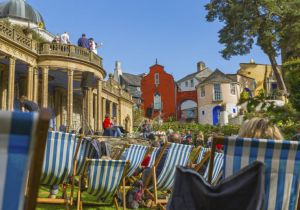
There are so many amazing things to do in Britain: from a sightseeing tour of London’s iconic landmarks to uncovering centuries of history at one of the many castles and museums or enjoying a traditional afternoon tea, the possibilities are endless.



